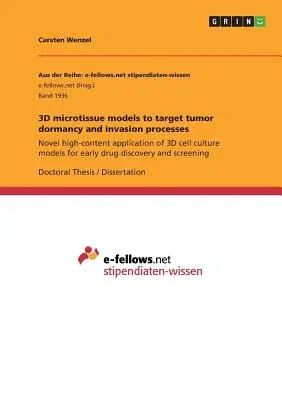Doctoral Thesis / Dissertation from the year 2014 in the subject
Medicine - Biomedical Engineering, grade: 1,0, Technical University of
Berlin (Biotechnologie), language: English, abstract: Despite all
efforts to discover novel therapeutic options to treat cancer the
disease remains devastating causing more than 14 million deaths in
2012 - and the trend is rising. Some parts of the preclinical drug
discovery process rely on cell culture models to reproduce the
pathophysiological features of cancer in in vitro experiments. These
cellular models are then used in screening campaigns that aim to
identify substances such as small molecules, peptides, or interfering
RNA that alter the phenotype of a cancer cell in a desired manner. One
of the main properties of cancer cells is their uncontrolled cell
division. Accordingly, the cell cycle is a major target for
chemotherapy, but resistance to chemotherapy frequently causes treatment
failure in patients with advanced and inoperable cancer. As the distance
from supplying blood vessels increases, oxygen and nutrient
concentrations decrease and cancer cells react by halting cell cycle
progression and entering a dormant state. As cytostatic drugs mainly
target proliferating cells, cancer cell dormancy is considered a major
resistance mechanism to this class of anti-cancer drugs. Therefore,
substances that target cancer cells in poorly vascularized tumor regions
have the potential to enhance cytostatic-based chemotherapy in solid
tumors. Multicellular tumor spheroids (MCTS) allow for three-dimensional
growth conditions, thus reproducing several parameters of the tumor
microenvironment, including oxygen and nutrient gradients as well as the
development of dormant tumor regions. Here, the evaluation of a 3D cell
culture high-content screening system led to the identification of nine
substances from two commercially available drug libraries that
specifically target cells in inner MCTS core regions. Subsequently, the
mode of actio


